READY TO GET STARTED?
REQUEST A FREE ESTIMATE
Fill out the form below or call (888) 466-7849 for a free, no-obligation estimate.
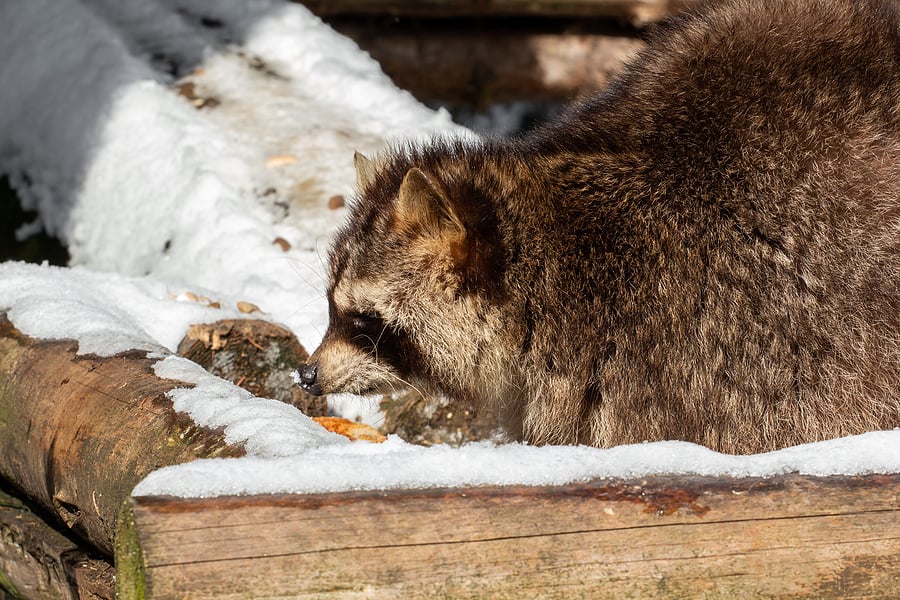
When cold weather hits, winter wildlife go in search of three things: food for their bellies, water to quench their thirst, and warm shelter to keep them safe. When the going gets tough, these winter pests have to get creative in order to survive – often by making their way into your attic, chimney, basement, or crawlspace. While it’s beneficial for them, it can cause serious damage to both your home and your health to have them sharing space with you.
How do you know if you have a stowaway for the winter? Common signs of wildlife include:
Now that you know what to look for, what kinds of animals can cause these signs? Some of the most common winter wildlife include:
Prevention is key to avoiding a winter wildlife invasion. Critter control starts at home with these winter wildlife prevention tips:
Chimneys provide a great hideout and also a gateway for wildlife to get into your home. Make sure the top of your chimney has a grated screen that is in good repair with no holes. Check above the flue panel for any leaves, debris, droppings, or animals before sealing it up. Make sure your chimney is secure.
Small holes, cracks, open pipes, etc. in your foundation provide easy routes for wildlife to get into your home. A careful inspection of your foundations should be performed every season throughout the year. Seal any openings as you find them.
Any tiny cracks or openings in your roof or siding means easy access to your attic. Check the entire exterior of the roof, starting with the intersections and siding. Make sure to also check the flushing seams on the roof. Siding that connects to the roof should not be warped or pulled away. Be sure to check around exhaust openings and for loose vent screens, as well.
Many wildlife critters love to hide out in the attic. Use a flashlight or headlamp and thoroughly inspect this space, checking for openings or chewed up or damaged areas of wood. Seal any holes you find but always make sure the animals are not still present before you do.
Your trashcans offer a buffet of food sources for pests. Use cans with tightly securing lids, avoid overfilling them, and wash the bins regularly to get rid of food waste.
Branches and limbs offer squirrels, raccoons, and other creatures a bridge directly into your home. Keep trees and shrubs trimmed away from the house. Prune shrubs to keep them at least 12″ from the sides of your home. Trim any branches that overhang or touch your roof, as well.
Leaving food sources outside your home will just attract wildlife in. Try to avoid leaving pet food outside and tossing scraps or pouring leftover grease in the yard. Pick up any fallen fruit. Protect your gardens with fences that are designed to keep animals out. Clean up any spilled birdseed from feeders and bring them in overnight.
Wildlife control is an ongoing process that needs special attention and consideration, especially in the cold winter months. If you have a problem with winter wildlife, contact your local pest control company for an inspection and appropriate treatment or wildlife exclusion plan.
4 Pests That Are Closer Than You Think!
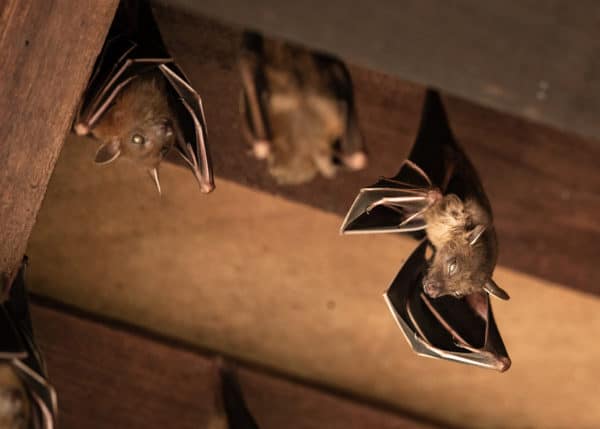
Nuisance wildlife is defined as any type of wild animal that invades a human habitat. This can include squirrels, skunks, opossum, raccoons, moles, voles, groundhogs, birds, bats, snakes, rodents, and more. Anytime a pest gets into your home the potential for damage and contamination is significant. That’s why it’s important to deal with the issue as soon as possible.
There are different ways to handle nuisance pests when they find a way into your home. Extermination involves killing the nuisance pest through the use of traps, toxins, and poisons. While this is generally cheaper and more efficient, the chemicals used can be dangerous for humans, pets, and other non-nuisance wildlife. Wildlife control involves the selective removal of problem populations of certain species of wildlife and usually employs the use of live traps or professional trappers to catch and relocate the nuisance pests to a safer habitat away from humans. This method usually takes longer than extermination and is more expensive. Wildlife exclusion is usually performed as a part of either of these wildlife services and involves preventative measures such as sealing up entry points and habitat modification (which ensures unwanted pests can’t access your property or structures).
Animal control services can be provided by your local government and is usually free although it is often selective in what types of animals they will service. Services provided and cost varies by area and municipality.
A professional wildlife control company will often combine wildlife control, exclusion and/or extermination methods depending on the type of pest you have. Whenever possible, humane control methods such as live removal and relocation are the preferred method of treatment.
Wildlife services typically range from $150 to $500 with the average visit costing between $250 and $250, although it can cost upwards of $1000 depending on what type of pest is involved and how much damage has already been caused. Most wildlife control companies will charge a flat fee or a minimum service fee (usually between $150 and $250), although some will also charge an additional hourly fee per hour after the first hour of service (anywhere from $25/hour to $250/hour depending on the service). This is determined by the type of pest problem, where it is located in the house, and what services are required (removal, exclusion, cleanup, etc). Raccoons and squirrels are usually the most expensive pests to service with an average of $200 to $1500 for a visit depending on the size of the infestation and the amount of damage inflicted. DIY traps can cost anywhere from $50 to $350.
In addition to fees for wildlife control services, damages caused by these nuisance pests is an often overlooked cost that should factor in to the overall budget. The longer you wait to get rid of the pest, the more damage that can occur. Nuisance pests can damage walls, chew through electrical wiring putting you at risk for fires, destroy insulation, and contaminate your home and HVAC system. Repairs for these issues including insulation replacement, wiring repair, drywall repair, duct repair, crawlspace cleaning and repair, and siding repair can be quite expensive and the cost can escalate quickly.
If you have a wildlife issue, contact a professional wildlife control company. A professional technician can inspect your home to determine what type of animal you are dealing with, the extent of the problem and damage, and appropriate ways to treat it. They can also provide you with wildlife exclusion techniques to help prevent repeat issues in the future. Professionals also guarantee their methods and are trained in the proper handling of wildlife, as well as the newest methods and techniques.
Is Mosquito Control Needed In Winter?
Where Did These Ants Come From?
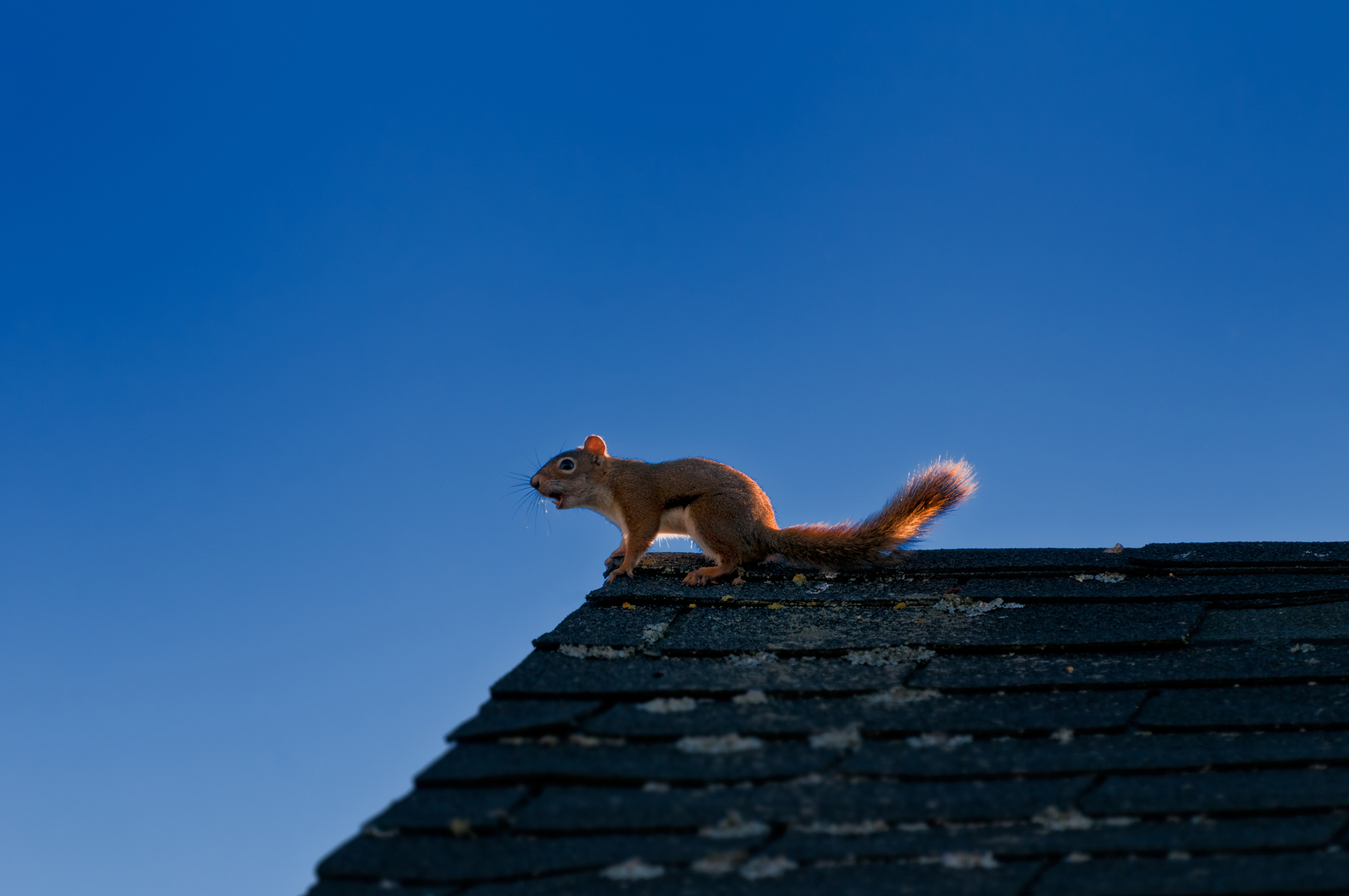
Squirrels may seem cute and harmless…until they’re seeking warmth and shelter inside your home. As the weather gets colder, it’s common for small animals like squirrels to nest in your attic, usually gaining access from gaps around your roofline, through vents, or even chimneys. Other than being annoyingly noisy, squirrels can cause major damage inside your home by chewing on wires, which can lead to power outages or fire, by contaminating storage areas and insulation with fur, urine, and droppings, and by allowing other pests or rodents to enter your home through holes they’ve created to gain access into your home.
Because squirrels can chew through a lot of roofing materials, like wood, aluminum, or shingles, and fit through small openings, gaining access points into your attic is easy. If you see any gaps or holes, use wire to seal off the areas and caulking to seal smaller cracks and crevices.
If you’re sealing gaps, it’s possible to trap squirrels inside your attic where they could eventually die or create more damage by chewing their way out in other places. By trapping the squirrels, you can prevent this from happening. Trapping should be done by someone that’s experienced; we recommend calling in a wildlife control company for this that uses live traps and places the traps in strategic areas that the squirrels are likely to come across. Once the squirrels are caught, they should be moved outside of your home, far enough away so as not to tempt them to return.
Keeping tree limbs cut back and trimmed will further prevent squirrels from gaining access to your attic. Squirrels use tree limbs as a direct route onto your roof; cutting off these access points will eliminate a source of entry.
To get rid of squirrels isn’t an easy task. It often requires the knowledge and expertise of a wildlife control company. It’s equally as important to trap and remove the squirrels as it is to prevent them from coming back. A squirrel control professional will know how to find the squirrels, the most effective trapping and removal methods, and provide services and recommendations for future squirrel prevention.
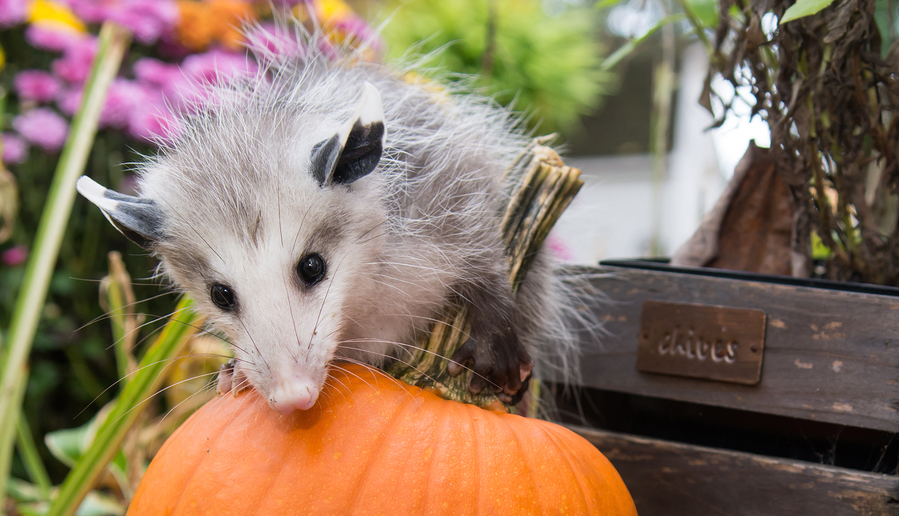
As the season changes to Fall, the weather cools down and gives us much needed relief from the hot summer. This is also the season of home pest invasions. Pests and rodents are looking for a warm place with food and shelter and your home or business may be the target. Here’s 6 things you can do at home to prevent pests from becoming part of the family this Fall.
Attic and crawl space vents should be properly screened, as well as chimney openings. This is a common entry points for wildlife and pest nuisances, like squirrels and mice.
Pests need water to survive just like people do. Correct leaking pipes and clogged drains to avoid excess areas of moisture, which will attract pests.
Using caulk and/or steel wool, seal any openings around your home, especially around utility pipes.
Making food and trash available to pests and rodents gives them steady food supply. Store food in airtight containers and dispose of garbage regularly in bins that have lids.
Store firewood at least 20 feet away from the house and keep shrubbery well trimmed to eliminate potential hiding spots for pests and wildlife.
Install door sweeps on any exterior doors to close any gaps for pests to come through. Repair damaged screens or replace missing ones. This creates an extra barrier around windows to help keep pests out.
For more on pest control and wildlife & animal control in your area, click on the links below.
Atlanta pest and animal control
Savannah pest and animal control
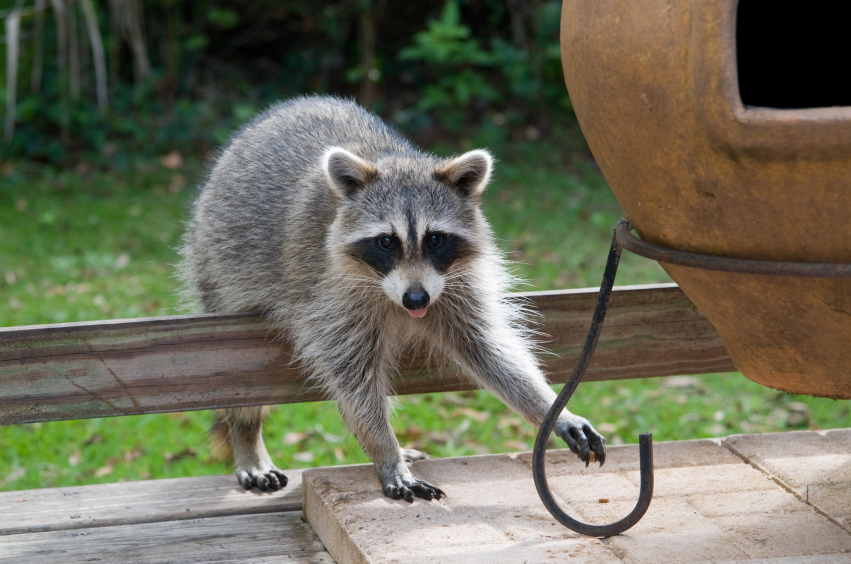
If you are hearing scratching in your attic at night there is a good chance that you could have a raccoon. If you search your attic in the daytime you will probably not find the raccoon. Raccoons are nocturnal creatures found throughout the US but are more common in wooded areas.
Raccoons do not hibernate but they do become inactive in the winter months by seeking shelter…hence why they are in your attic. Raccoons can cause damage to structures as they enter your attic or chimney. They can cause a huge mess by raiding garbage cans in search of food and will even destroy gardens by running through and/or eating crops. In addition to the property damage that they cause, they also carry rabies.
Raccoon Prevention:
To prevent raccoons from entering your home make sure that all possible entrances around the attic and roofline are sealed. Repair broken vent covers, loose siding or shingles, and install mesh covers or caps over chimneys to prevent raccoons from entering. Make sure that all outside trash is in an animal proof, tightly sealed garbage can.
If you believe that you may have raccoons in your attic, call Northwest Exterminating for raccoon removal.